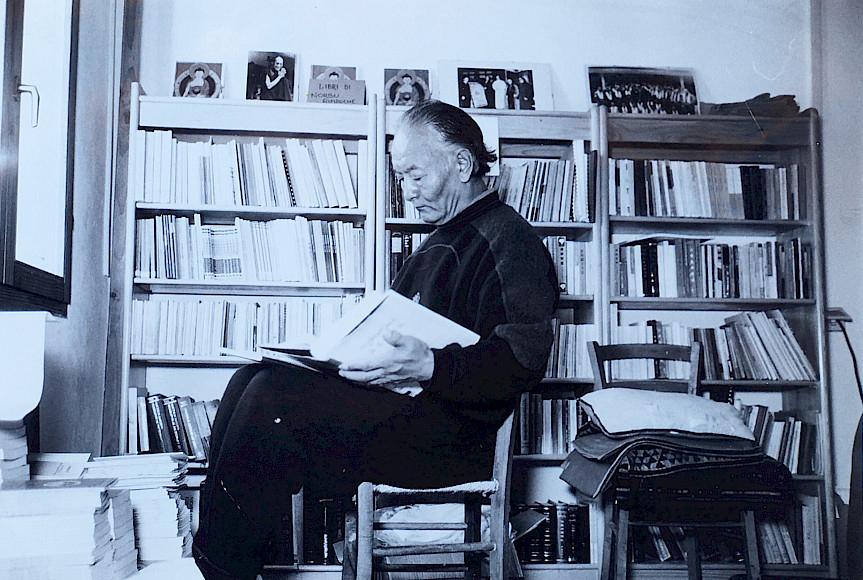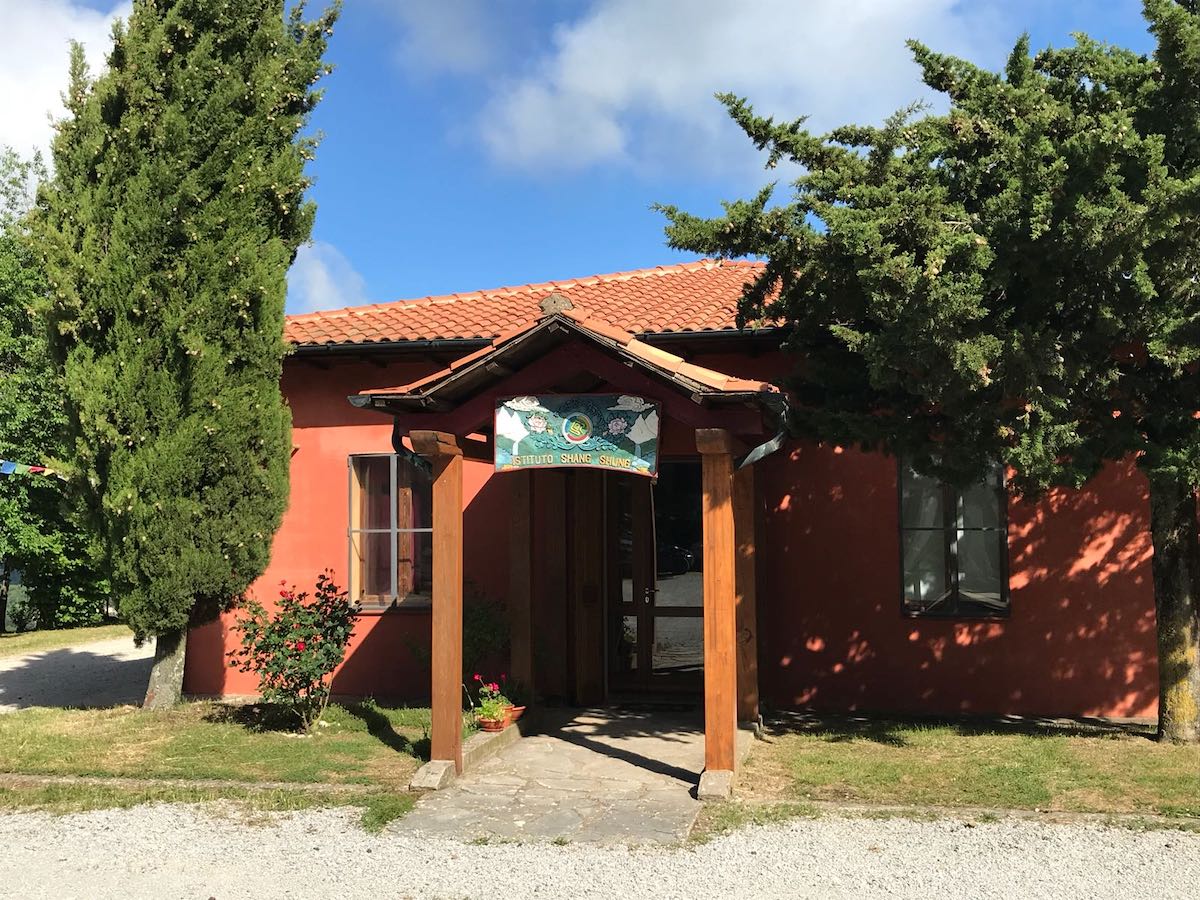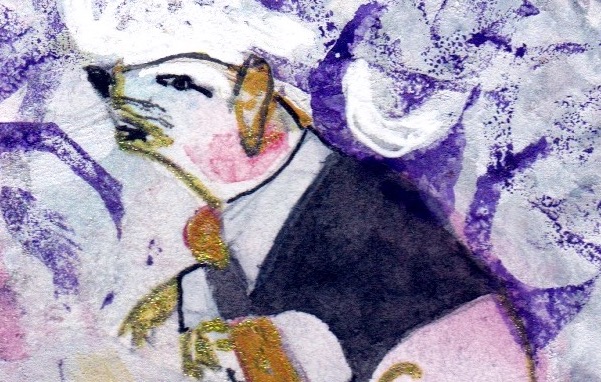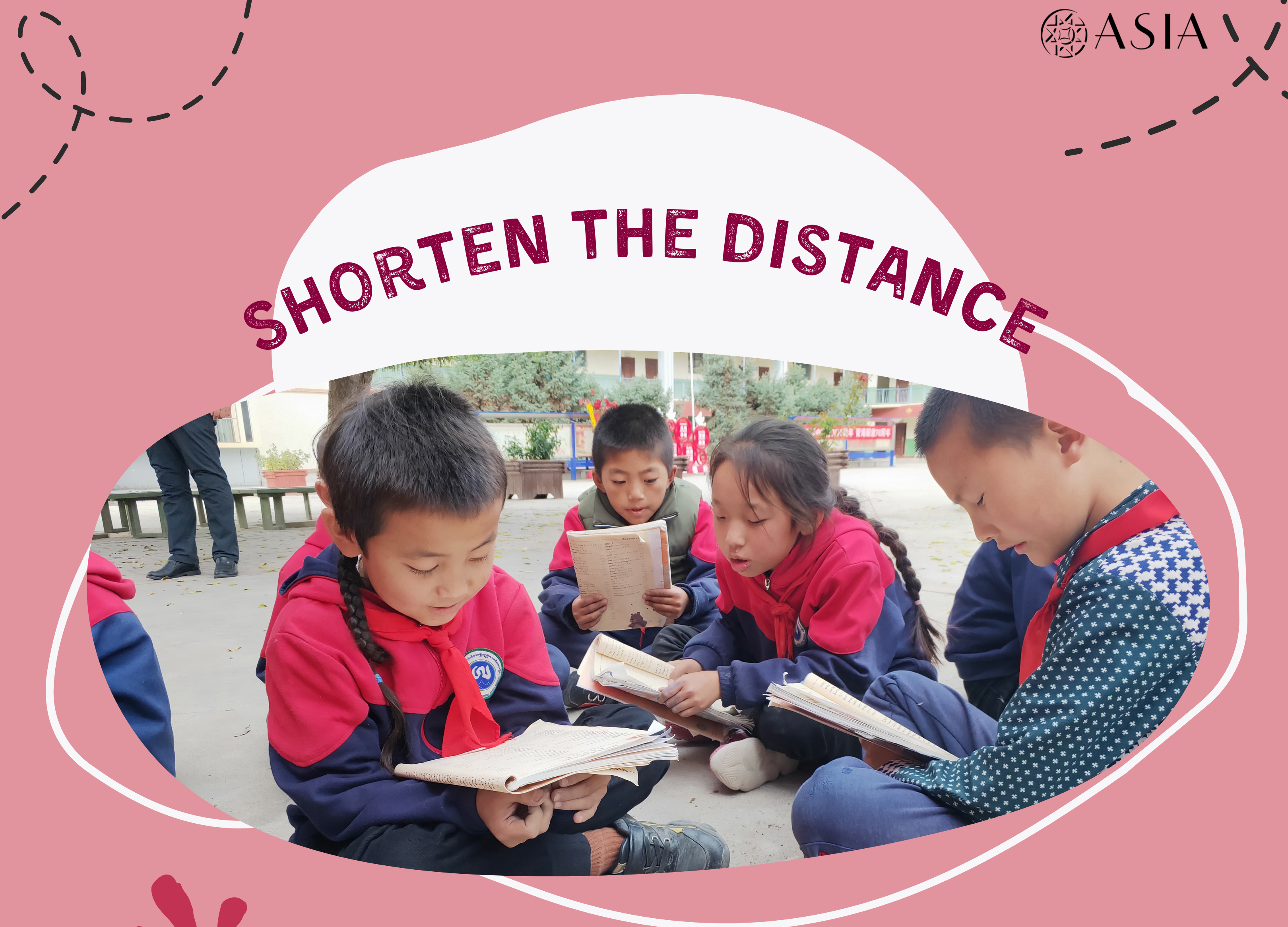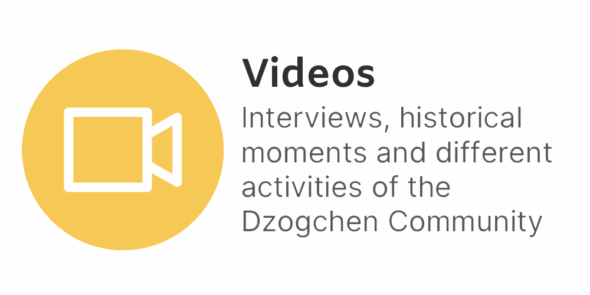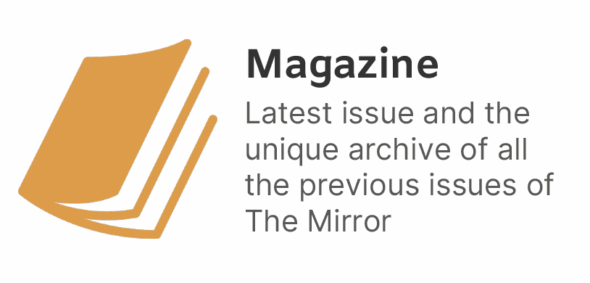From Ka-ter’s Life of Knowledge Series
A talk by Adriano Clemente offering deep insights into the vast literary legacy of Chögyal Namkhai Norbu, exploring how his written works continue to illuminate the path of knowledge and realization for students around the world.
From the beginning I have been the main translator for Chögyal Namkhai Norbu. Before that Enrico Dell’Angelo and Giacomella Orofino were translating for the first two or three years but then Giacomella became more involved with academic research and teaching at the university and Enrico, for other reasons, gradually left this commitment.
When I started translating, I really committed myself and was continuously translating. Rinpoche saw that and maybe he was happy with the way that I asked questions and translated so he more or less chose me. Many years later he called me his Lotsawa, his translator, and that’s how I began.
I have to mention Elio Guarisco [another translator who worked with Adriano] who was not only a good translator but also a very good practitioner and a very collaborative person. Elio arrived later in the Community, not in the beginning, but we never had any competition or tension. We always collaborated very well and this is not something that always happens. Elio also had a lot of knowledge of the Vajrayana tradition, such as the Sarmata tradition and the Kagyupa because he had worked for years on Jamgön Kongtrül’s encyclopedic work, The Treasury of Knowledge, just like I have worked on the Bonpo tradition for the book Drung, Deu and Bon.
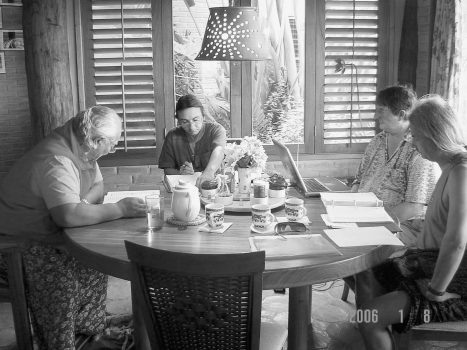
Since he passed away, there is no replacement for him because he had 40 years of experience and we don’t have these kinds of translators in our Community. So I have taken on all of his translation work that was unfinished.
Now I will tell you briefly what is more or less left of Rinpoche’s books to translate. At the moment I’m working on Chanchub Dorje’s biography. This is an extraordinary work of which Elio translated 70%. When he died he had arrived at the point when Chanchub Dorje’s wife, who was a very great realized dakini, died so I thought that maybe this is a good sign. I asked some Tibetan friends to complete the remaining part and now I am reviewing it from the beginning to the end. It is very difficult and I’m retranslating many parts with the help of Tibetan consultants because some parts are in local dialect.
This is a very important text for us because Chanchub Dorje was the root master of our master so there is this living transmission. For instance, if you visit these places – like Chanchub Dorje’s residence, or the place of Nyagla Rangrig who was Chanchub Dorje’s teacher, or Nyagla Pema Düddul’s place, the teacher of Ayu Khandro – you can really feel that the transmission is alive.
Changchub Dorje was an extraordinary human being as was our teacher although each has different aspects because Chanchub Dorje was on that level where he was first of all a tertön who discovered material objects and he also had supernatural experiences. I think you will be amazed when you read his biography. It’s really beautiful.
And I think it is important to understand that the Dzogchen teaching is Vajrayana teaching. It is the essence of Vajrayana. All these great realized teachers that we have in the lineage always practiced Anuyoga and Dzogchen combined. This is a very important point because otherwise if Dzogchen is separate from Vajrayana it becomes something more on the mental level. This is not very easy to explain. But in general, in order to know the Dzogchen teaching well, we should understand that Dzogchen and, for example, Prajnaparamita or Chan or Zen teaching, are not the same. Dzogchen teaching is based on the principle of primordial potentialities.
So what is left to translate? First of all, we have Rinpoche’s Longsal teachings, the terma teachings that he received for many years. There are still two or three commentaries that we need to publish. Unfortunately, Rinpoche didn’t write commentaries to all his 30 or so Longsal upadesas that we have translated.
Then we have an important book which is the section of the views from the Santi Maha Sangha first and the second level. Many parts are from Nubchen Sangye Yeshe’s Samten Migdrön, The Lamp for the Eye of Contemplation. Rinpoche had prepared these only for students of Santi Maha Sangha, but then he arranged a volume for the public. Another important text is the commentary with quotations from the Dratalgyur.
There were three stages in Rinpoche’s life as a teacher in which he relied more on a particular text. At the beginning he relied very much on the Kunjyed Gyalpo. Then, in a second stage, he worked with Nubchen Sangye Yeshe’s book – he told me that it was his Bible – which he read and studied for years. Thirdly Rinpoche discovered the Dratalgyur, this commentary by Vimalamitra that he worked with for many years. This is the last and will be an important book.
Then there is another work which is the Buddhagupta text from Dunhuang. This is a short text that Rinpoche wrote a commentary to many years ago and is the most famous of his books in Tibetan. It has also been included in the last edition of the Kama, a collection of Tibetan Nyingmapa commentaries and texts.
Then we have other books such as instructions of the Dorje Sempa Namka Che of which I have collected all the existing commentaries. So if I have time and a long life, this is the last book that I will do. There will be the root verse and then the various commentaries so you can study them all. It’s a very difficult text and Rinpoche was very much interested in it.
At the moment I’m working like the father of “as famous as the moon” who won a large amount of money, hung it over his head and then spent his time thinking about what he was going to do with this money the following year and the year after. Then unfortunately the rope broke, the bag of money fell on his head and he died. What can I do in that case? But it’s fine. I have already done so much work.
We have other books that Rinpoche wrote like the Three Paths of Liberation and Shiné and Lhagthong, but these are mostly from other texts. Then we have a detailed explanation of Thögal that Rinpoche wrote in the 70s. Jim Valby has done a rough translation of this text. Then we have some Santi Maha Sangha texts to review.
Then we have other biographies, not by Rinpoche, such as Adzom Drugpa’s biography. We already have a rough translation. And then there is a text on Yantra Yoga and the channels and pranas that Rinpoche taught in Tenerife in 2013 or 2014 that Elio translated. There is a commentary on the Namkha Che written by Shri Simha that Elio translated. So I should review all these translations that Elio did.
And then there is the other text by Chanchub Dorje that Rinpoche taught. So we are trying to translate all the teachings that Rinpoche gave from other masters. In the future I want to do a presentation of the lineage of Chögyal Namkhai Norbu, a kind of history, how Rinpoche received all these teachings from different teachers, which ones he has taught, when he taught them, where, and whether they have been translated or not, so that we know what we have received.
Finally there are two of the most important works. One is Rinpoche’s autobiography. There are actually two autobiographies. One is called The Tibetan teacher, the master acharya, who goes around the world. This was not Rinpoche’s title. He received it in a dream perhaps in 1955. Can you imagine? He had no idea at that time that he would go to the West. It’s called Bod kyi a tsa ra rgyal khams nyul ba’i gtam, The Story of How the Tibetan Acharya Went Travelling Abroad. He wrote this book after he recovered from a grave illness in ‘95. Each chapter is a question from himself, it’s called Kuntog Wangpo, the power of his thought or his mind. For instance, he asks himself questions such as, “Oh, Namkhai Norbu, what did you do in that year when you started in the monastery? How much did you suffer because of this?” And he replies with many stories. This is one book and it is in verse.
Then there is another book which goes year by year. It is called Tutrin in Tibetan, activities in time. I’m considering possibly combining these two texts which have so much material, especially in all the parts in Tibet in 1958-59 there are many very interesting stories. Then there is the part when he came to Rome in the roaring sixties and learned how to dance the twist and met his first girlfriend, started to teach, everything is written there. And it is very interesting. Of course, we also have a lot of material from stories that Rinpoche told throughout his lifetime both during formal teachings and in conversation. We could even do a book with this material because not everything is in written form. If you can imagine how Rinpoche came from the middle ages of Tibet in the 1960s, it makes a very fascinating story.
There is another book which is called The Book of Dreams in English. One day I received this book in a CD and there was a note saying, “Dear Adriano, I’m giving you this book because you are my translator,” so I thought it implied that I had to translate it. Some parts of this book are already included in the Longsal series: there is a dream and then the teaching. This book of dreams is about 3000 computer pages. I hope I can also do this job because it is really incredible. It’s a kind of inner secret biography because the outer biography is what he wrote. In The Book of Dreams he meets his teacher and asks for advice and his teacher advises him to do this or that, or perhaps to do a particular practice, or to take particular care with something.
So if you want to read about all these things, firstly you will have to do long life practice and live longer. The second thing is that the Ka-ter funding must continue because if it dries up then the translator becomes dry and cannot write on a computer. Well, this is just joking because I don’t care much about that and as long as I’m alive, I will always continue to serve Rinpoche in whatever way I can. There is no doubt about that.
From a talk at Merigar West, Italy, October 19, 2025.
The ongoing translation and sharing of these precious teachings are made possible through the kindness and generosity of us readers.
If you wish to support the continuation of this work—helping us bring more of these extraordinary teachings to life— please keep on reading.
As Chögyal Namkhai Norbu wrote about the virtues of generosity, your offerings not only sustain the Dharma but also enrich your own path. You can read his inspiring words on generosity here:
READ ABOUT THE VIRTUES OF GENEROSITY
DONATE NOW
SEE ALL DONATION OPTIONS

Get in Touch
You can write to us at info@ka-ter.com and we will happily assist you with any questions you may have.
With gratitude for walking this path together,
Oliver Leick and Jamyang Oliphant
for the KA-TER Project and the Life of Knowledge series.

